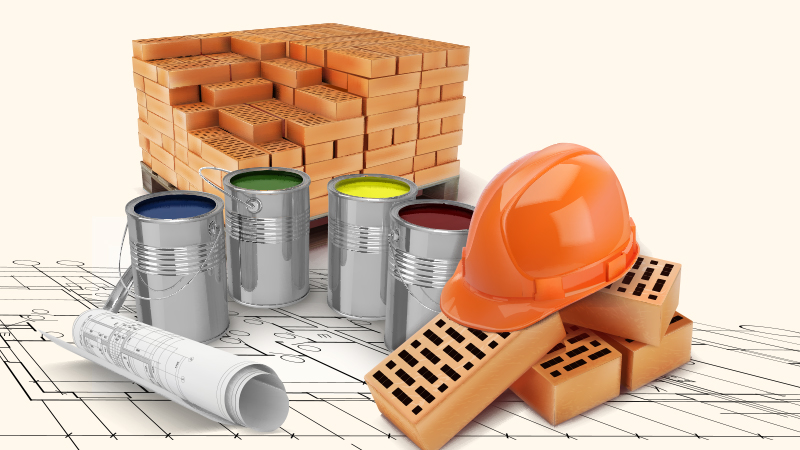
Building Green: Navigating Sustainable Building Materials
The choice of building materials plays a pivotal role in creating environmentally conscious and sustainable structures. From reducing environmental impact to promoting energy efficiency, the use of sustainable building materials is a key element in the construction industry’s shift toward eco-friendly practices. In this article, we’ll explore the importance of sustainable building materials and highlight some innovative options for a greener future.
Environmental Impact of Building Materials: A Critical Consideration
The construction industry has a significant environmental footprint, with building materials being a major contributor. Sustainable building materials aim to address this impact by considering factors such as resource depletion, carbon emissions, and waste generation. Opting for materials with lower environmental impact is crucial in minimizing the overall ecological consequences of construction projects.
Energy Efficiency and Thermal Performance: A Green Imperative
Sustainable building materials contribute to the energy efficiency of structures. Materials with high thermal mass, such as insulated concrete or rammed earth, can absorb, store, and release heat, reducing the need for mechanical heating and cooling. This not only lowers energy consumption but also enhances the comfort of occupants, making energy-efficient materials a cornerstone of sustainable construction.
Recycled and Upcycled Materials: Giving New Life to Discarded Resources
Recycling and upcycling materials divert waste from landfills and reduce the demand for virgin resources. Building materials made from recycled content, such as recycled steel, glass, or plastic, showcase how discarded materials can be transformed into durable and high-quality building components. Embracing recycled materials promotes a circular economy and minimizes the extraction of raw materials.
Biodegradable and Renewable Resources: Embracing Nature’s Bounty
Utilizing biodegradable and renewable resources is a key aspect of sustainable construction. Materials like bamboo, cork, and hemp are renewable options that grow quickly, making them environmentally friendly choices. Biodegradable materials, such as certain insulation options, break down naturally over time, further reducing the environmental impact at the end of a building’s life cycle.
Low VOC and Non-Toxic Finishes: Promoting Indoor Air Quality
Indoor air quality is a crucial consideration for the health and well-being of building occupants. Sustainable building materials extend to finishes like paints, adhesives, and sealants that are low in volatile organic compounds (VOCs) and free from harmful toxins. Prioritizing non-toxic finishes contributes to better indoor air quality and creates healthier living and working environments.
Green Roofing and Living Walls: A Breath of Fresh Air
Green roofing systems and living walls introduce nature into the built environment. Green roofs, covered with vegetation, provide insulation, absorb rainwater, and create habitats for wildlife. Living walls, adorned with plants, improve air quality by filtering pollutants. Integrating these features into construction projects enhances sustainability while fostering a closer connection between architecture and nature.
Structural Insulated Panels (SIPs): Efficient and Sustainable Building Blocks
Structural Insulated Panels (SIPs) are composite building materials that consist of an insulating layer sandwiched between two structural panels. This construction method provides high thermal performance, reducing energy consumption for heating and cooling. SIPs are also resource-efficient, making them a sustainable choice for constructing energy-efficient and well-insulated buildings.
Cradle to Cradle Design: Closing the Loop on Waste
The cradle to cradle (C2C) design philosophy promotes a regenerative approach to manufacturing, where products are designed with the end of their life cycle in mind. Materials are selected and manufactured to be reused or recycled, creating a closed-loop system that minimizes waste. Adopting C2C principles in construction ensures that materials contribute positively to the environment throughout their entire life cycle.
Certifications and Standards: Navigating the Green Landscape
Various certifications and standards help guide the selection of sustainable building materials. Labels like LEED (Leadership in Energy and Environmental Design) and FSC (Forest Stewardship Council) indicate adherence to specific environmental criteria. These certifications provide a valuable framework for architects, builders, and consumers to make informed choices that align with sustainability goals.
A Greener Future with Sustainable Building Materials
To explore a curated selection of sustainable building materials and gain insights into eco-friendly construction practices, visit Sustainable Building Materials. Embracing these materials is not just a trend; it’s a commitment to building a greener, more sustainable future. From reducing environmental impact to improving energy efficiency, the choices we make in construction today have far-reaching implications for the planet and future generations.



